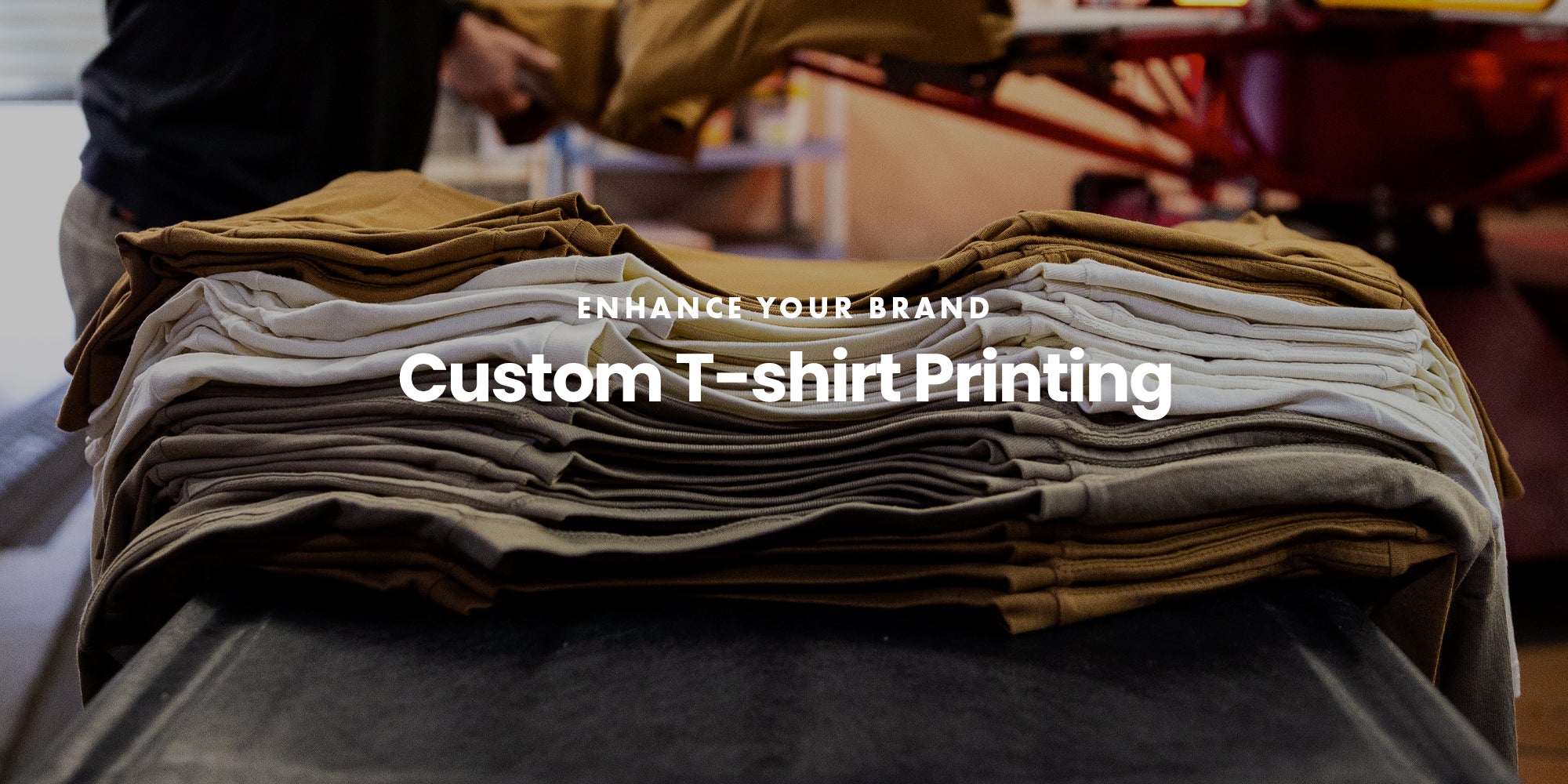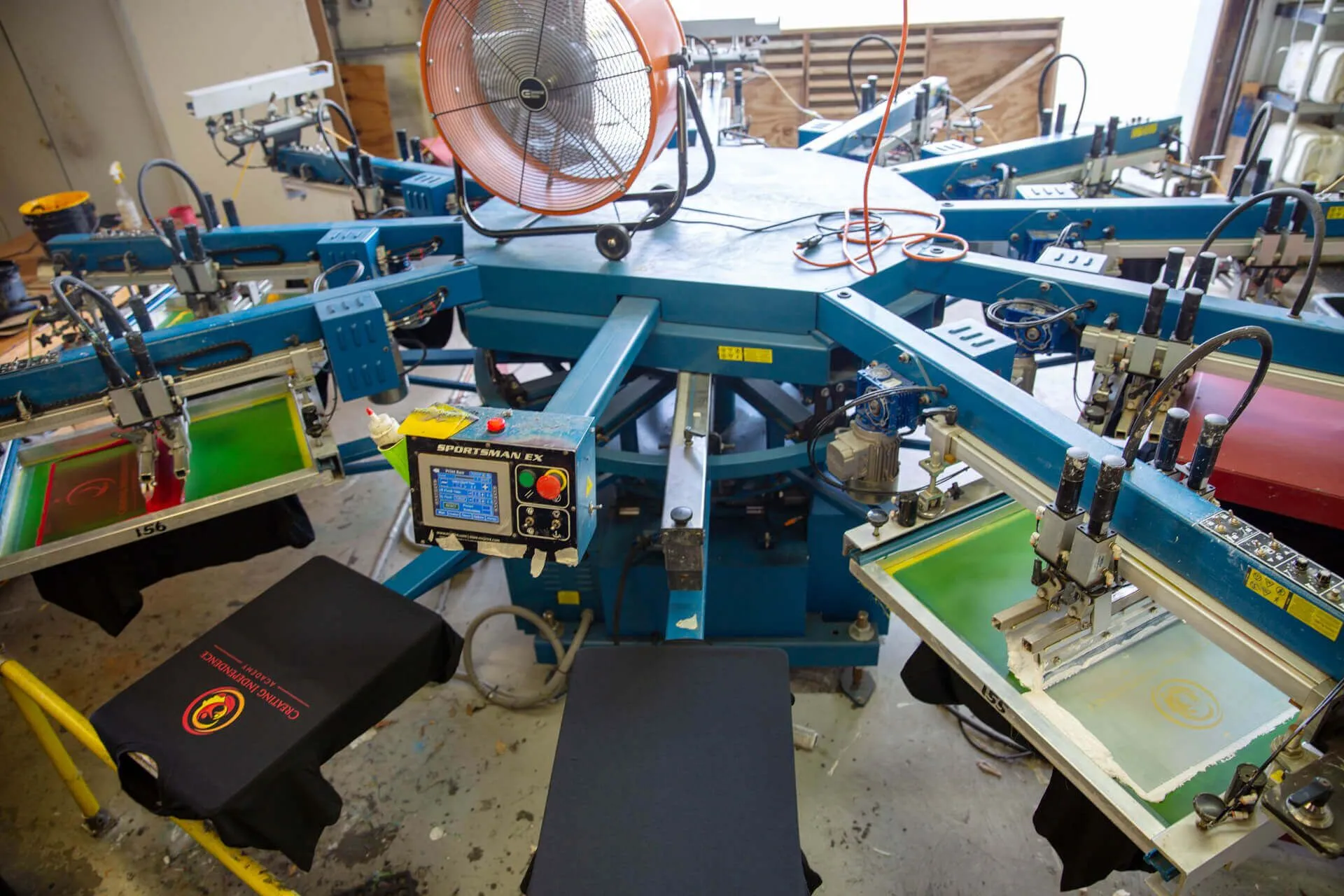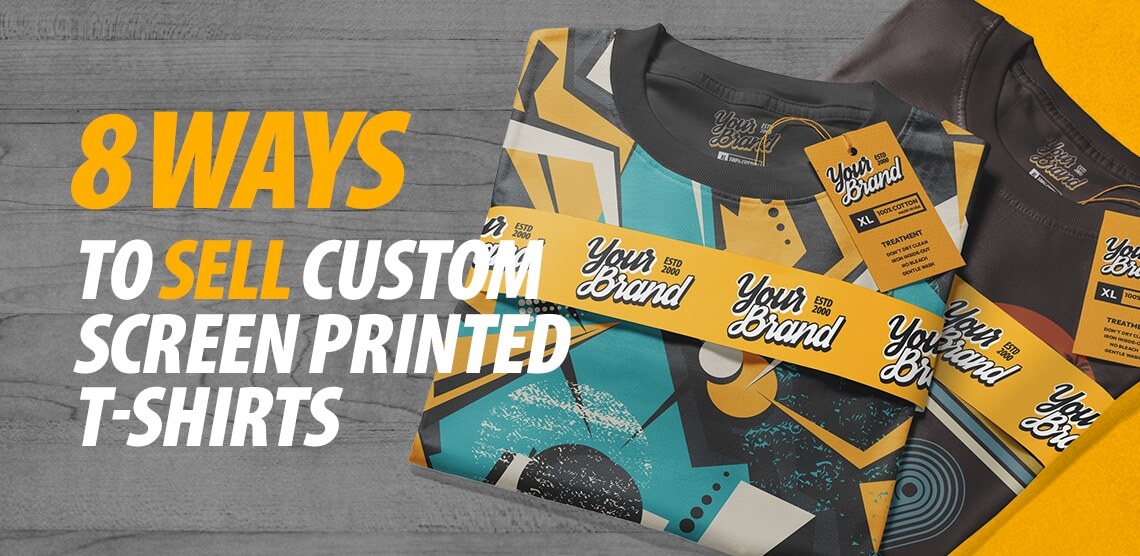Display Printing Uncovered: Every Little Thing You Need to Know Concerning Tee and Garment Printing Techniques
Screen printing is a remarkable approach that incorporates art with strategy, providing endless possibilities for creative thinking. All set to check out the necessary components that make screen printing an art form?
The Fundamentals of Display Printing: Exactly How It Functions
When you plunge into display printing, you'll uncover it's both a scientific research and an art. At its core, display printing includes producing a stencil, or display, that allows ink to pass with only in particular locations (screen printing kit). You start by selecting your design and preparing your display with a light-sensitive emulsion. As soon as you reveal this emulsion to light, it solidifies, leaving your style as an unfavorable space.
Position the display over the material, then utilize a squeegee to press ink through the screen onto the garment. Each action is necessary, and mastering them will certainly boost your display printing abilities, changing straightforward garments right into special, expressive items.
Kinds of Display Printing Strategies
Once you understand the essentials of screen printing, it's time to discover the numerous methods that can boost your designs. One popular approach is traditional screen printing, where ink is pressed via a stenciled display.
Another option is plastisol printing, known for its resilience and vivid shades, making it a preferred for many brand names. Experiment with halftone printing to produce gradient results and intricate designs.
Vital Tools for Display Printing
To attain spectacular outcomes in display printing, having the appropriate devices is basic. Initially, you'll need a strong display printing framework, which holds the mesh that transfers your design onto the garment. Next, buy top notch mops; these are necessary for applying ink uniformly throughout the display. You'll likewise call for a great direct exposure system to produce your screens, in addition to a washout booth for cleansing them after usage. A trustworthy warm resource, like a conveyor dryer or heat press, is essential for curing your prints to ensure durability. Don't forget a correct workspace, geared up with tables and storage for your materials. Safety gear, such as gloves and masks, will maintain you secure from chemicals and inks. With the right devices, you'll be well on your method to producing professional-quality prints.
Picking the Right Inks and Products
When picking inks and materials for display printing, you need to take into consideration the sort of ink that works best for your project. Believe concerning material compatibility to ensure your styles look fantastic and last lengthy. Check out green ink alternatives to make your printing process extra lasting.
Kinds of Display Inks
Picking the right screen ink is essential for achieving vivid, sturdy prints that satisfy your task's requirements. There are numerous kinds of display inks to examine. Specialty inks, such as metal or glow-in-the-dark, can add one-of-a-kind results to your layouts.

Material Compatibility Factors To Consider
Recognizing textile compatibility is important for accomplishing premium screen prints, particularly given that various materials react distinctly to numerous inks. When selecting inks, think about the textile kind-- cotton, polyester, or blends. For cotton, water-based inks work well, supplying gentleness and breathability. Polyester, on the other hand, typically requires plastisol inks for better bond and vibrant shades. If you're publishing on blends, you could require to use a mix of both types. Constantly test your inks on example textile to guarantee they adhere effectively and preserve color stability. Furthermore, remember that fabric weight and appearance can influence the final end result, so selecting the right ink and material combination is vital for your task's success.
Eco-Friendly Ink Options
Green inks are ending up being a preferred choice for display printers who intend to decrease their ecological impact while preserving top quality. When choosing inks, think about water-based inks, which are much less damaging and simpler to tidy up compared to standard solvents. These inks bond well with textiles, providing lively outcomes without toxic chemicals. You could likewise discover eco-solvent inks that use less unpredictable natural substances (VOCs), making them a safer option for both your health and the world.
In addition, try to find inks made from renewable energies, such as soy or vegetable-based alternatives. By choosing the ideal inks and materials, you'll not only produce sensational designs but additionally add to an extra sustainable printing procedure. Make the switch, and your prints will certainly reflect your commitment to the environment!
Preparing Your Style for Display Printing

Submit Format Needs
To guarantee your style looks sharp and vibrant on textile, you'll need to pay close attention to file style demands for display printing. Make certain your layout has a transparent background to stop undesirable white edges on your prints. Keep color settings in mind; CMYK is standard for screen printing, so transform your RGB develops accordingly.
Shade Splitting Up Strategies
Shade splitting up is a necessary action in preparing your design for display printing, and understanding it can considerably enhance your print high quality. You'll require to break your style right into specific shades, as each color needs a separate screen during printing. Start by recognizing all the shades in your layout and create layers for each one. You can make use of software program like Adobe Photoshop or Illustrator to separate and separate colors properly. Be specific to conserve each layer as a separate documents, commonly in a style like TIFF or PSD. This accuracy not only guarantees exact shade depiction yet also simplifies the printing process. By taking note of shade splitting up, you'll achieve dynamic and expert outcomes in your screen-printed garments.
Resolution and Dimension
Accomplishing the finest lead to display printing begins with guaranteeing your design has the right resolution and size. Preferably, your art work needs to be at the very least 300 DPI (dots per inch) for sharp, clear prints. If you use reduced resolution, your final item might look pixelated and less than professional.
When it involves dimension, consider the dimensions of your print location. Style your art work to match the last print dimension, ideally producing it in the actual measurements you'll be publishing. This means, you'll avoid any unforeseen scaling issues.
Constantly check your design in both vector and raster formats. Vector graphics can be scaled without shedding quality, making them suitable for display printing. Preparing correctly will assure your design looks remarkable on every garment!
Step-by-Step Screen Printing Refine
Display printing is a dynamic process that permits you to create lively styles on various surfaces. To get started, you'll require a screen, solution, and your chosen ink.
Pour ink onto the display and use a squeegee to press the ink with the stencil onto the textile. Lift the screen meticulously and allow the print dry. You've efficiently display printed your layout.
Tips for Successful Screen Printing Projects
While you're diving into your screen printing tasks, bear in mind that prep work is key to success. Begin by gathering all your products-- inks, garments, squeegees, and screens. A clean workspace aids protect against undesirable errors, so clean up prior to you begin.
Next, verify your art work is high-resolution and effectively sized for your garment. Check your display for correct exposure and tidy it thoroughly to stay clear of spots. When mixing your inks, adhere to the supplier's standards to achieve the appropriate consistency.
Throughout printing, apply even stress with your squeegee for consistent results. Don't hurry; take your time to validate each print meets your standards. After printing, let your garments completely dry entirely before managing or packaging them.
Finally, always maintain an example of your job for future referral. By doing this, you can evaluate your development and enhance your strategies with time. Happy printing!

Regularly Asked Inquiries
How Long Does It Take to Establish up a Display Printing Job?
Establishing up a screen printing task normally takes around half an hour to an hour. You'll prepare the screens, mix inks, and change the press. The moment differs based on intricacy and experience, so stay arranged!
Can I Print on Different Textile Keys In Using the Same Technique?
Yes, you can publish on different fabric types making use of the same technique, but you'll need to readjust your setups and inks. Some textiles soak up ink in different ways, so experimenting assurances the very best outcomes for each material.
What Are Common Mistakes to Prevent in Display Printing?
When screen printing, prevent common mistakes like utilizing the incorrect ink, ignoring proper exposure times, or missing pre-press checks. Always check your arrangement and keep tidy displays to assure top quality outcomes each time.
How Can I Properly Tidy and Preserve My Display Printing Tools?
To correctly tidy and maintain your display printing devices, you should routinely clean displays with ideal solvents, check mops for wear, and assure all devices are saved dust-free and dry. Uniformity enhances and avoids costly repair work efficiency.
Is Screen Printing Eco-friendly Compared to Other Techniques?
Display printing can be extra ecologically pleasant than various other approaches, specifically if you make use of water-based inks and eco-conscious materials. By choosing sustainable supplies and practices, you lower waste and decrease your effect on the planet.
Screen Printing Uncovered: Everything You Required to Know Regarding Tee and Garment Printing Strategies
At its core, display printing includes developing a stencil, or screen, that permits ink to pass via only in specific locations. Placement the screen over the material, after that utilize a squeegee to press ink with the screen onto the garment. One preferred approach is traditional display printing, where ink is pressed with a stenciled display.When choosing inks and materials for display printing, you require to take right into account the type of ink that works finest for your task.